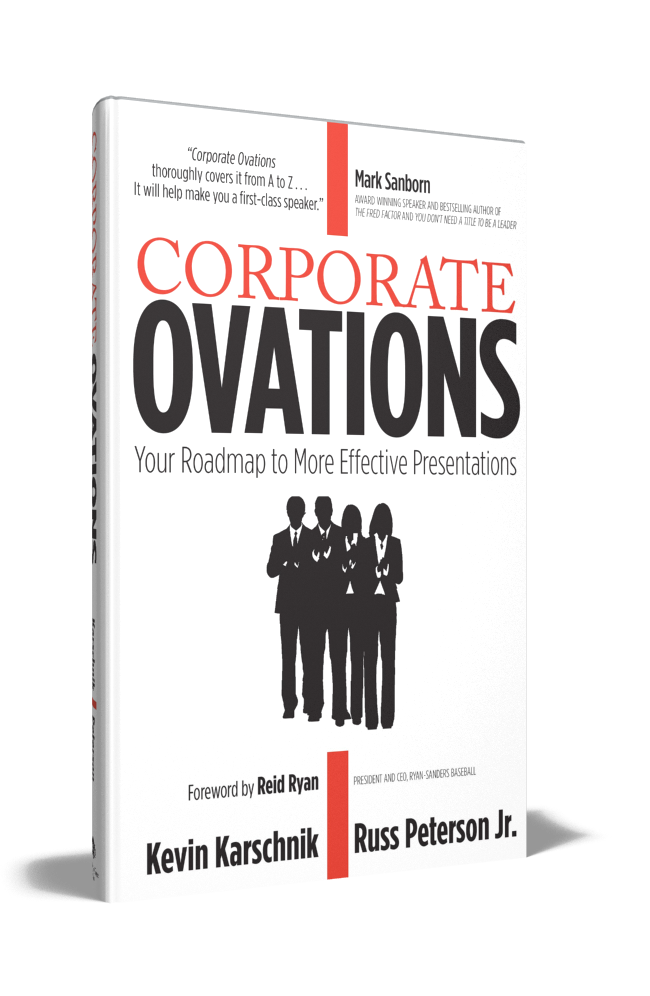And When to use it…
You’ve finally got the promotion you’ve been looking for at work. In this new position you will be leading a team of 12 people who have never met you before. Your manager suggests calling a team meeting where she will introduce you to your new team. “Then you can take over the meeting and introduce yourself. You know… just tell them more about yourself. It’ll be fun.”

That all sounds great, but now you start to feel some anxiety creeping in because this will be your first presentation to your team! What will you say? What will they think of you? How will they react to you?
When to Use the Model
You’ve got a lot on your mind, but we can help with a simple storyline (narrative) template called the “Who Am I?” Story. Your situation is a perfect time to use this story template. Any time you need to introduce your authentic self to a group, this model works great.
What Your Audience Does NOT want
I’m guessing you’ve all seen this before, when someone stands to speak in response to the request, “Hey, why don’t you tell us a little about yourself?” Most people respond to this with a chronological list of their resume. We all start to go a little numb when we realize you’re walking down your timeline year by year telling us about each of your pit stops along the way.
It’s a laundry list of company names and job titles which tells us nothing about the real you. We want to know the authentic you! To do that, you’ll need to take us back to a moment in time when you had to make a decision. We learn about other people when we watch them react in a situation.
Someone who knows how to tell more about himself without giving a timeline of events is Michael Dell. In his autobiography he tells several stories about his past. This one is a story from his childhood, but it tells us about how Michael Dell leads today.
One of Michael Dell’s “Who Am I?” Stories
The father of my best friend was a pretty avid stamp collector, so now naturally my friend and I wanted to get into stamp collecting, too. To fund my interest in stamps, I got a job as a water boy in a Chinese restaurant two blocks from my house. I started reading stamp journals just for fun, and soon began noticing that prices were rising. Before long, my interest in stamps began to shift from the joy of collecting to the idea that there was something here that my mother, a stockbroker, would have termed “a commercial opportunity.”…
I was about to embark upon one of my very first business ventures. First, I got a bunch of people in the neighborhood to consign their stamps to me. Then I advertised “Dell’s Stamps” in Linn’s Stamp Journal, the trade journal of the day. And then I typed, with one finger, a twelve-page catalog… and mailed it out. Much to my surprise, I made $2,000. And I learned an early, powerful lesson about the rewards of eliminating the middleman. I also learned that if you’ve got a good idea, it pays to do something about it.
What Do We Learn?
Stephen Denning, the author of The Leader’s Guide to Storytelling, does a fantastic job of breaking down Michael Dell’s story. Denning points out how we learn some very important things about Dell in this story, and I bet you can even pull more from it.
- Michael Dell is entrepreneurial and bold
- He’s aggressive and direct
- We learn his perspective on his own actions from when he was young
- Seeing where he was then and where he is now gives you the sense he will continue to follow that trend line
How do I build a “Who Am I?” Story?
What’s the formula for you to build your own story? It’s actually quite simple. Even after you construct the story, don’t forget to rehearse it a few times. Just knowing the story is very different from delivering the story!
- Focus on a turning point in your life, maybe a fork in the road where a decision had to be made
- Try to keep your story focused on the positive. If the turning point generates a negative feeling, leave the audience with positive at the end showing how you overcame it.
- Inject a little humor when appropriate
- Don’t focus too much on your good qualities. You don’t want to appear like you’re bragging.
- Bring the story back to relevance for the audience.
It can take some practice but your audience will love this much more than you providing the timeline of jobs and titles you’ve had in the past.
Until next week,
Russ

Let’s connect…
on Twitter if we haven’t already?
OR Let’s connect via my Facebook page!
iSpeak teaches workshops on Professional Selling to help sales leaders gather the most important data and then use that information to create the right message. Are your sales presentations closing eyelids or deals?
Russ Peterson Jr. is the co-founder and Managing Director of iSpeak, Inc. – An award-winning professional development training company. Russ is a speaker, international trainer, and published author on Professional Sales Communication and Business Communication. He delivers workshops, keynotes, and personal communication coaching services to business professionals in the US and around the world. His leadership blog assists leaders in giving voice to their vision. You can connect with Russ directly through Twitter, Facebook and LinkedIn.


Please note: I reserve the right to delete comments that are offensive or off-topic.